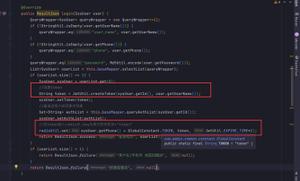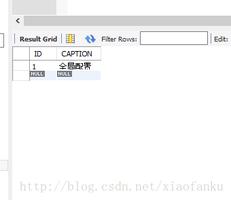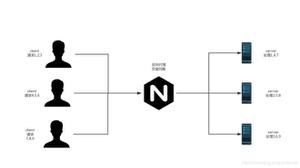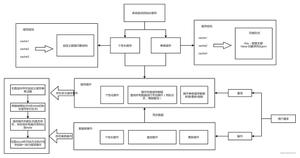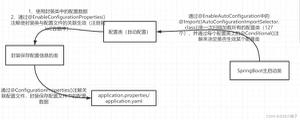.NET CORE与Spring Boot编写控制台程序应有的优雅姿势
本文内容纲要:.NET CORE与Spring Boot" title="Spring Boot">Spring Boot编写控制台程序应有的优雅姿势
本文分别说明.NET CORE与Spring Boot 编写控制台程序应有的“正确”方法,以便.NET程序员、JAVA程序员可以相互学习与加深了解,注意本文只介绍用法,不会刻意强调哪种语言或哪种框架写的控制台程序要好。
本文所说的编写控制台程序应有的“正确”方法,我把正确二字加上引号,因为没有绝对的正确,因人而异,因系统设计需求而异,我这里所谓的正确方法是指使用面向对象,依赖注入IOC,切面控制AOP等编码规范来提升程序的性能、整洁度、可读性、可维护性等,最终达到让人感觉有点高大上,有点优雅的样子。
先来说说.NET CORE编写控制台程序,目前网络上大把的讲解ASP.NET CORE的编写规范,反而对于.NET CORE控制台程序编写规范介绍比较少,大多停留在Hello Word 程序中,而本文则来讲讲.NET CORE控制台的编写规范(应有的优雅姿势)^ v ^
如果说不讲什么IOC,DI,AOP等,不讲扩展性,规范性,全部面向过程(方法)编程,那估计没什么好讲的,因为无非就是定义一个class,然后在class中定义一堆的method(方法),如果在方法中需要使用到其它第三方组件,则直接单独引用,引用后进行简单封装util工具类的静态方法,甚至也不用封装,直接使用原生的方法,总之全部都是方法调方法。而这里所演示的编写控制台方法均是尽可能的使用.NET CORE所具有的特性,只有这样才能体现出.NET CORE框架的优势,否则普通控制台程序与.NET CORE控制台程序有什么区别。
编写.NET CORE控制台程序优雅姿势一:(直接使用.NET CORE的 IOC、Logging、Config组件)
代码如下:
//Program.csusing Microsoft.Extensions.DependencyInjection;
using System;
using Microsoft.Extensions.Logging;
using Microsoft.Extensions.Configuration.Json;
using Microsoft.Extensions.Configuration;
using System.IO;
namespace NetCoreConsoleApp
{
class Program
{
static void Main(string[] args)
{
//设置config文件
var config = new ConfigurationBuilder()
.SetBasePath(Directory.GetCurrentDirectory())
.AddJsonFile("appSettings.json", optional: true, reloadOnChange: true).Build();
//设置依赖注入
var provider = new ServiceCollection()
.AddLogging(configLogging => //设置日志组件
{
configLogging.SetMinimumLevel(LogLevel.Information);
configLogging.AddConsole();
})
.AddScoped<IConfiguration>(p => config)
.AddScoped<HostService>()
.BuildServiceProvider();
var hostService = provider.GetService<HostService>();
hostService.RunAsync();//统一入口服务
Console.WriteLine("提示:程序已正常启动运行,按任意键停止运行并关闭程序...");
Console.ReadLine();
}
}
}
//HostService.cs
using Microsoft.Extensions.Configuration;
using Microsoft.Extensions.Logging;
using System;
using System.Diagnostics;
using System.Threading;
using System.Threading.Tasks;
namespace NetCoreConsoleApp
{
public class HostService
{
private readonly IConfiguration config;
private readonly ILogger<HostService> logger;
public HostService(IConfiguration config, ILogger<HostService> logger)
{
this.config = config;
this.logger = logger;
}
public void RunAsync()
{
Task.Run((Action)Execute);
}
/// <summary>
/// 控制台核心执行入口方法
/// </summary>
private void Execute()
{
//TODO 业务逻辑代码,如下模拟
Stopwatch stopwatch = Stopwatch.StartNew();
for (int i = 1; i <= 100; i++)
{
Console.WriteLine("test WriteLine:" + i);
Thread.Sleep(100);
}
stopwatch.Stop();
logger.LogInformation("Logging - Execute Elapsed Times:{}ms", stopwatch.ElapsedMilliseconds);
}
}
}
因为要使用.NET CORE相关核心组件,故需要引用相关的NuGet包(引用包的方式有多种方式),而且默认的.NET CORE控制台只会生成DLL并不会生成EXE启动程序,故如果仅在WIN系统下使用,还需要设置生成方式等,详细配置属性如下:(项目文件csproj)


<Project Sdk="Microsoft.NET.Sdk"> <PropertyGroup>
<OutputType>Exe</OutputType>
<TargetFramework>netcoreapp2.2</TargetFramework>
<RuntimeIdentifiers>win10-x64</RuntimeIdentifiers>
<SelfContained>false</SelfContained>
</PropertyGroup>
<ItemGroup>
<PackageReference Include="Microsoft.Extensions.Configuration.Json" Version="2.2.0" />
<PackageReference Include="Microsoft.Extensions.DependencyInjection" Version="2.2.0" />
<PackageReference Include="Microsoft.Extensions.Logging.Console" Version="2.2.0" />
</ItemGroup>
</Project>
View Code
如上代码虽简单但代码编写顺序很关键,这里进行说明一下:
1.因为一般应用程序都会有config文件,故我们需要先通过new ConfigurationBuilder来设置config文件的方式及路径;
2.因为要使用.NET CORE默认的IOC框架,故new ServiceCollection,然后将相关的依赖服务组件注册到IOC容器中;
3.config、logging 均是一个程序最基本的依赖组件,故将其注册到IOC容器中,注册logging有专门的扩展方法(AddLogging),而config没有则直接使用通过的注册方法(当然也可以基于ServiceCollection写一个AddConfiguration扩展方法)
4.控制台需要一个核心的入口方法,用于处理核心业务,不要直接在Program中写方法,这样就不能使用IOC,同时也没有做到职责分明,Program仅是程序启动入口,业务处理应该有专门的入口,故上述代码中有HostService类(即:核心宿主服务类, 意为存在于控制台中的服务处理类,在这个类的构造涵数中列出所需依赖的服务组件,以便实例化时IOC可以自动注入这个参数),并注册到IOC容器中,当然也可以先定义一个IHostService接口然后实现这个接口。(如果有多个HostService类实例,建议定义一个IHostService接口,接口中只需要入口方法定义即可,如:RunAsync)
5.当各组件初始化设置OK、IOC注册到位后,就应该通过IOC解析获得HostService类实例,并执行入口方法:RunAsync,该方法为异步后台执行,即调用该方法后,会在单独的后台线程处理核心业务,然后主线程继续往下面走,输出关闭提示信息,最后的Console.ReadLine();很关键,这个是等待输入流并挂起当前主线程,目的大家都知道,不要让控制台程序关闭。
通过上述的讲解及源代码展示,有没有感觉优雅呢?如果觉得这样还算优雅,那下面展示的第二种更优雅的姿势
编写.NET CORE控制台程序优雅姿势二:(使用通用主机也称泛型主机HostBuilder)
代码如下:Program.cs
using Microsoft.Extensions.DependencyInjection;using Microsoft.Extensions.Hosting;
using Microsoft.Extensions.Logging;
using NLog.Extensions.Logging;
using Microsoft.Extensions.Configuration;
using System.IO;
using Polly;
using System;
namespace NetCoreConsoleApp
{
class Program
{
static void Main(string[] args)
{
var host = new HostBuilder()
.ConfigureHostConfiguration(configHost =>
{
configHost.SetBasePath(Directory.GetCurrentDirectory());
})
.ConfigureAppConfiguration(configApp =>
{
configApp.AddJsonFile("appsettings.json", optional: false, reloadOnChange: true);
})
.ConfigureServices((context, services) =>
{
//添加数据访问组件示例:services.AddTransient<IDbAccesser>(provider =>
//{
// string connStr = context.Configuration.GetConnectionString("ConnDbStr");
// return new SqlDapperEasyUtil(connStr);
//});
//添加HttpClient封装类示例:services.AddHttpClient<GitHubApiClient>()
//.AddTransientHttpErrorPolicy(builder => builder.WaitAndRetryAsync(3, t => TimeSpan.FromMilliseconds(800)));
services.AddHostedService<DemoHostedService>();
})
.ConfigureLogging((context, configLogging) =>
{
configLogging.ClearProviders();
configLogging.SetMinimumLevel(LogLevel.Trace);
configLogging.AddNLog(context.Configuration);
})
.UseConsoleLifetime()
.Build();
host.Run();
}
}
}
DemoHostedService类代码:
using Microsoft.Extensions.Configuration;using Microsoft.Extensions.Hosting;
using Microsoft.Extensions.Logging;
using System;
using System.Diagnostics;
using System.Threading;
using System.Threading.Tasks;
namespace NetCoreConsoleApp
{
public class DemoHostedService : IHostedService
{
private readonly IConfiguration config;
private readonly ILogger logger;
public DemoHostedService(IConfiguration config, ILogger<DemoHostedService> logger)
{
this.config = config;
this.logger = logger;
}
public Task StartAsync(CancellationToken cancellationToken)
{
Console.WriteLine(nameof(DemoHostedService) + "已开始执行...");
//TODO 业务逻辑代码,如下模拟
Stopwatch stopwatch = Stopwatch.StartNew();
for (int i = 1; i <= 100; i++)
{
Console.WriteLine("test WriteLine:" + i);
Thread.Sleep(100);
}
stopwatch.Stop();
logger.LogInformation("Logging - Execute Elapsed Times:{}ms", stopwatch.ElapsedMilliseconds);
return Task.FromResult(0);
}
public Task StopAsync(CancellationToken cancellationToken)
{
Console.WriteLine(nameof(DemoHostedService) + "已被停止");
return Task.FromResult(0);
}
}
}
因为要使用HostBuilder类及相关的.NET CORE组件(如上代码主要使用到了:Host、Dapper、Nlog、Polly等),故仍需引用相关的NuGet包,详细配置属性如下:(项目文件csproj)


<Project Sdk="Microsoft.NET.Sdk"> <PropertyGroup>
<OutputType>Exe</OutputType>
<TargetFramework>netcoreapp2.2</TargetFramework>
<RuntimeIdentifiers>win10-x64</RuntimeIdentifiers>
<SelfContained>false</SelfContained>
</PropertyGroup>
<ItemGroup>
<PackageReference Include="Dapper" Version="1.60.6" />
<PackageReference Include="Microsoft.Extensions.Configuration.FileExtensions" Version="2.2.0" />
<PackageReference Include="Microsoft.Extensions.Configuration.Json" Version="2.2.0" />
<PackageReference Include="Microsoft.Extensions.Hosting" Version="2.2.0" />
<PackageReference Include="Microsoft.Extensions.Http.Polly" Version="2.2.0" />
<PackageReference Include="NLog.Extensions.Logging" Version="1.5.1" />
<PackageReference Include="System.Collections.Concurrent" Version="4.3.0" />
</ItemGroup>
<ItemGroup>
<None Update="appsettings.json">
<CopyToOutputDirectory>PreserveNewest</CopyToOutputDirectory>
</None>
<None Update="nlog.config">
<CopyToOutputDirectory>PreserveNewest</CopyToOutputDirectory>
</None>
</ItemGroup>
</Project>
View Code
如上代码所示,写过ASP.NET CORE程序的人可能比较眼熟,这与ASP.NET CORE的写法很类似,是的,你没有看错,HostBuilder是通用主机,是可以广泛应用于非HTTP的环境下,而ASP.NET CORE中的**WebHostBuilder**主要用于HTTP WEB环境,使用方式基本类似,都是先定义HostBuilder,然后利用扩展方法注册、配置各种组件(中间件),最后调用Host的Run方法,开启后台服务执行,不同的是WebHostBuilder多了属于HTTP专有的一些属性及方法及其适用的中间件。
由于这种写法比较通用,适用于已熟悉.NET CORE或ASP.NET CORE的人群,上手也较简单,故建议采取这种方式来写.NET CORE控制台程序。需要注意的是HostBuilder中最重要的是:注册HostedService 服务,如上代码中的DemoHostedService即是实现了IHostedService接口的宿主后台服务类,可以定义多个,然后都注册到IOC中,最后Host会按注册先后顺序执行多个HostedService服务的StartAsync方法,当停止时同样会执行多个HostedService服务的StopAsync方法
下面再来看看使用Spring&Spring Boot框架来优雅的编写控制台程序
编写Spring控制台程序优雅姿势一:(只引用所必需的spring jar包、logger jar包,追求极简风)
使用IDEA +MAVEN 创建一个quickstart 控制台项目,在maven POM XML中先引用所必需的spring jar包、logger jar包等,配置如下:


<?xml version="1.0" encoding="UTF-8"?><project xmlns="http://maven.apache.org/POM/4.0.0" xmlns:xsi="http://www.w3.org/2001/XMLSchema-instance"
xsi:schemaLocation="http://maven.apache.org/POM/4.0.0 http://maven.apache.org/xsd/maven-4.0.0.xsd">
<modelVersion>4.0.0</modelVersion>
<artifactId>spring-console</artifactId>
<name>spring-console</name>
<!-- FIXME change it to the project's website -->
<url>http://www.zuowenjun.cn</url>
<properties>
<project.build.sourceEncoding>UTF-8</project.build.sourceEncoding>
<maven.compiler.source>1.8</maven.compiler.source>
<maven.compiler.target>1.8</maven.compiler.target>
<spring.version>5.1.8.RELEASE</spring.version>
</properties>
<dependencies>
<dependency>
<groupId>junit</groupId>
<artifactId>junit</artifactId>
<version>4.11</version>
<scope>test</scope>
</dependency>
<dependency>
<groupId>org.springframework</groupId>
<artifactId>spring-core</artifactId>
<version>${spring.version}</version>
</dependency>
<dependency>
<groupId>org.springframework</groupId>
<artifactId>spring-beans</artifactId>
<version>${spring.version}</version>
</dependency>
<dependency>
<groupId>org.springframework</groupId>
<artifactId>spring-context</artifactId>
<version>${spring.version}</version>
</dependency>
<dependency>
<groupId>org.slf4j</groupId>
<artifactId>slf4j-api</artifactId>
<version>1.7.25</version>
</dependency>
<dependency>
<groupId>ch.qos.logback</groupId>
<artifactId>logback-classic</artifactId>
<version>1.2.3</version>
</dependency>
</dependencies>
<build>
<pluginManagement><!-- lock down plugins versions to avoid using Maven defaults (may be moved to parent pom) -->
<plugins>
<!-- clean lifecycle, see https://maven.apache.org/ref/current/maven-core/lifecycles.html#clean_Lifecycle -->
<plugin>
<artifactId>maven-clean-plugin</artifactId>
<version>3.1.0</version>
</plugin>
<!-- default lifecycle, jar packaging: see https://maven.apache.org/ref/current/maven-core/default-bindings.html#Plugin_bindings_for_jar_packaging -->
<plugin>
<artifactId>maven-resources-plugin</artifactId>
<version>3.0.2</version>
</plugin>
<plugin>
<artifactId>maven-compiler-plugin</artifactId>
<version>3.8.0</version>
</plugin>
<plugin>
<artifactId>maven-surefire-plugin</artifactId>
<version>2.22.1</version>
</plugin>
<plugin>
<artifactId>maven-jar-plugin</artifactId>
<version>3.0.2</version>
</plugin>
<plugin>
<artifactId>maven-install-plugin</artifactId>
<version>2.5.2</version>
</plugin>
<plugin>
<artifactId>maven-deploy-plugin</artifactId>
<version>2.8.2</version>
</plugin>
<!-- site lifecycle, see https://maven.apache.org/ref/current/maven-core/lifecycles.html#site_Lifecycle -->
<plugin>
<artifactId>maven-site-plugin</artifactId>
<version>3.7.1</version>
</plugin>
<plugin>
<artifactId>maven-project-info-reports-plugin</artifactId>
<version>3.0.0</version>
</plugin>
</plugins>
</pluginManagement>
<plugins>
<plugin>
<groupId>org.apache.maven.plugins</groupId>
<artifactId>maven-compiler-plugin</artifactId>
<configuration>
<source>8</source>
<target>8</target>
</configuration>
</plugin>
</plugins>
</build>
</project>
View Code
然后采取自定义注解类(SpringBeansConfig)的方式注册相关Bean(包含配置映射类Bean:AppProperties),代码如下:
//app.javapackage cn.zuowenjun.spring;
import cn.zuowenjun.spring.cn.zuowenjun.spring.services.HostService;
import org.springframework.context.annotation.AnnotationConfigApplicationContext;
import java.io.IOException;
/**
* Hello world!
*/
public class App {
public static void main(String[] args) {
AnnotationConfigApplicationContext applicationContext = new AnnotationConfigApplicationContext(SpringBeansConfig.class);
HostService hostService = applicationContext.getBean(HostService.class);
hostService.run();
applicationContext.registerShutdownHook();
try {
System.in.read();
} catch (IOException e) {
System.out.println("等待读取输入数据报错:" + e.getMessage() + ",将直接退出程序!");
}
}
}
//AppProperties.java
package cn.zuowenjun.spring;
import org.springframework.beans.factory.annotation.Value;
public class AppProperties {
@Value("${app.name}")
private String appName;
@Value("${app.author}")
private String appAuthor;
@Value("${app.test.msg}")
private String testMsg;
public String getAppName() {
return appName;
}
public void setAppName(String appName) {
this.appName = appName;
}
public String getAppAuthor() {
return appAuthor;
}
public void setAppAuthor(String appAuthor) {
this.appAuthor = appAuthor;
}
public String getTestMsg() {
return testMsg;
}
public void setTestMsg(String testMsg) {
this.testMsg = testMsg;
}
}
//SpringBeansConfig.java
package cn.zuowenjun.spring;
import cn.zuowenjun.spring.cn.zuowenjun.spring.services.HostService;
import org.springframework.context.annotation.Bean;
import org.springframework.context.annotation.Configuration;
import org.springframework.context.annotation.PropertySource;
import org.springframework.context.annotation.Scope;
import org.springframework.core.annotation.Order;
@Configuration
@PropertySource(value = "classpath:app.properties", ignoreResourceNotFound = false)
public class SpringBeansConfig {
@Bean
@Order(1)
public HostService hostService() {
return new HostService();
}
@Bean
@Order(0)
@Scope("singleton")
public AppProperties appProperties() {
return new AppProperties();
}
//注册其它所需Bean...
}
//HostService.java
package cn.zuowenjun.spring.cn.zuowenjun.spring.services;
import cn.zuowenjun.spring.AppProperties;
import org.slf4j.Logger;
import org.slf4j.LoggerFactory;
import org.springframework.beans.factory.annotation.Autowired;
import org.springframework.util.StopWatch;
import java.util.Collections;
import java.util.concurrent.ExecutorService;
import java.util.concurrent.Executors;
public class HostService {
private static final Logger LOGGER = LoggerFactory.getLogger(HostService.class);
@Autowired
private AppProperties appProperties;
//可以添加其它属性注入
public void run() {
// ExecutorService pool = Executors.newSingleThreadExecutor();
// pool.execute(() -> execute());
new Thread(this::execute).start();
}
/// <summary>
/// 控制台核心执行入口方法
/// </summary>
private void execute() {
//TODO 业务逻辑代码,如下模拟
StopWatch stopwatch = new StopWatch();
stopwatch.start();
for (int i = 1; i <= 100; i++) {
System.out.println("test WriteLine:" + i);
try {
Thread.sleep(100);
} catch (Exception e) {
}
}
stopwatch.stop();
System.out.println(String.join("", Collections.nCopies(30, "=")));
System.out.printf("app name is:%s %n", appProperties.getAppName());
System.out.printf("app author is:%s %n", appProperties.getAppAuthor());
System.out.printf("app test msg:%s %n", appProperties.getTestMsg());
LOGGER.info("Logging - Execute Elapsed Times:{}ms", stopwatch.getTotalTimeMillis());
}
}
app.properties配置文件内容如下,注意应放在classpth目录下(即:resources目录下,没有需自行创建并设为resources目录):
app.name=demo spring consoleapp.author=zuowenjun
app.test.msg=hello java spring console app!
如上即上实现一个spring的控制台程序,当然由于是示例,故只引用了logger包,正常还需引用jdbc或ORM框架的相关jar包, 上述代码关键逻辑说明(同样要注意顺序):
1.new AnnotationConfigApplicationContext类(spring IOC容器),创建一个IOC容器,类似.NET CORE中的ServiceProvider类;
2.定义 SpringBeansConfig bean注册配置类(注册相关依赖),这个类中依次注入相关的bean,如果bean之间有依赖顺序关系,建议添加@Order并指明序号;该类作为AnnotationConfigApplicationContext的构造函数参数传入,以便IOC自动解析并完成实际注册;
3.同样是定义一个HostService 宿主服务类,并实现run方法逻辑,一般采取后台线程异步执行,为了演示效果与.NET CORE的HostService 类相同,示例逻辑基本相同。另外还定义了AppProperties配置映射类,便于直接读取配置,.NET CORE同样也有类似注册bind到配置类中,然后在服务类中使用:IOptions<配置类>作为构造函数参数实现构造函数注入。只是由于篇幅有限故.NET CORE部份直接采取了注入IConfiguration,大家有兴趣可以查看网上相关资料。
4.IOC容器初始化并注册成功后,即可解析HostService 类获得实例,执行run方法,run方法会开启线程在后台处理,并返回到主线程,直至in.read()阻塞挂起主线程,防止程序自动关闭。
编写Spring boot控制台程序优雅姿势二:(引用spring boot jar包)
使用IDEA+Spring Initializr来创建一个spring boot项目,创建过程中按需选择依赖的框架,我这里是示例,故除了默认spring-boot-starter依赖外,其余什么依赖都不添加,创建后Maven POM XML如下:


<?xml version="1.0" encoding="UTF-8"?><project xmlns="http://maven.apache.org/POM/4.0.0" xmlns:xsi="http://www.w3.org/2001/XMLSchema-instance"
xsi:schemaLocation="http://maven.apache.org/POM/4.0.0 http://maven.apache.org/xsd/maven-4.0.0.xsd">
<modelVersion>4.0.0</modelVersion>
<parent>
<groupId>org.springframework.boot</groupId>
<artifactId>spring-boot-starter-parent</artifactId>
<version>2.1.6.RELEASE</version>
<relativePath/> <!-- lookup parent from repository -->
</parent>
<groupId>cn.zuowenjun.spring</groupId>
<artifactId>springboot-console</artifactId>
<version>0.0.1-SNAPSHOT</version>
<name>springboot-console</name>
<description>Demo project for Spring Boot</description>
<url>http://www.zuowenjun.cn</url>
<properties>
<java.version>1.8</java.version>
</properties>
<dependencies>
<dependency>
<groupId>org.springframework.boot</groupId>
<artifactId>spring-boot-starter</artifactId>
</dependency>
<dependency>
<groupId>org.springframework.boot</groupId>
<artifactId>spring-boot-starter-test</artifactId>
<scope>test</scope>
</dependency>
</dependencies>
<build>
<plugins>
<plugin>
<groupId>org.springframework.boot</groupId>
<artifactId>spring-boot-maven-plugin</artifactId>
</plugin>
</plugins>
</build>
</project>
View Code
然后创建相关的Bean类:HostService(宿主服务类,这个与前文定义类均相同)、AppProperties(配置映射类,这个是映射默认的application.properties配置文件,注意这里的映射方式与前文所描述稍有不周,采用:@ConfigurationProperties+属性映射,无需加@Value注解,映射属性时如果有-则应写成驼峰式,如果有.则应定义内部静态类,呈现层级属性完成映射,具体的用法可以参见我之前的文章):
//HostService.javapackage cn.zuowenjun.spring.services;
import cn.zuowenjun.spring.AppProperties;
import org.slf4j.Logger;
import org.slf4j.LoggerFactory;
import org.springframework.beans.factory.annotation.Autowired;
import org.springframework.stereotype.Component;
import org.springframework.util.StopWatch;
import java.util.Collections;
@Component
public class HostService {
private static final Logger LOGGER = LoggerFactory.getLogger(HostService.class);
@Autowired
private AppProperties appProperties;
//可以添加其它属性注入
public void run() {
// ExecutorService pool = Executors.newSingleThreadExecutor();
// pool.execute(() -> execute());
new Thread(this::execute).start();
}
/// <summary>
/// 控制台核心执行入口方法
/// </summary>
private void execute() {
//TODO 业务逻辑代码,如下模拟
StopWatch stopwatch = new StopWatch();
stopwatch.start();
for (int i = 1; i <= 100; i++) {
System.out.println("test WriteLine:" + i);
try {
Thread.sleep(100);
} catch (Exception e) {
}
}
stopwatch.stop();
System.out.println(String.join("", Collections.nCopies(30, "=")));
System.out.printf("app name is:%s %n", appProperties.getName());
System.out.printf("app author is:%s %n", appProperties.getAuthor());
System.out.printf("app test msg:%s %n", appProperties.getTestMsg());
LOGGER.info("Logging - Execute Elapsed Times:{}ms", stopwatch.getTotalTimeMillis());
}
}
//AppProperties.java
package cn.zuowenjun.spring;
import org.springframework.boot.context.properties.ConfigurationProperties;
import org.springframework.stereotype.Component;
@Component
@ConfigurationProperties(prefix = "app")
public class AppProperties {
private String name;
private String author;
private String testMsg;
public String getName() {
return name;
}
public void setName(String name) {
this.name = name;
}
public String getAuthor() {
return author;
}
public void setAuthor(String author) {
this.author = author;
}
public String getTestMsg() {
return testMsg;
}
public void setTestMsg(String testMsg) {
this.testMsg = testMsg;
}
}
application.properties配置文件:(注意app.test.msg此处改为了app.test-msg,因为这样就可以直接映射到类的属性中,否则得定义内部类有点麻烦)
app.name=demo spring consoleapp.author=zuowenjun
app.test-msg=hello java spring console app!
最后改造spring boot application类,让SpringbootConsoleApplication类实现ApplicationRunner接口,并在run方法中编写通过属性依赖注入获得HostService类的实例,最后执行HostService的run方法即可,代码如下:
package cn.zuowenjun.spring;import cn.zuowenjun.spring.services.HostService;
import org.springframework.beans.factory.annotation.Autowired;
import org.springframework.boot.ApplicationArguments;
import org.springframework.boot.ApplicationRunner;
import org.springframework.boot.SpringApplication;
import org.springframework.boot.autoconfigure.SpringBootApplication;
@SpringBootApplication
public class SpringbootConsoleApplication implements ApplicationRunner {
@Autowired
private HostService hostService;
public static void main(String[] args) {
SpringApplication.run(SpringbootConsoleApplication.class, args);
}
@Override
public void run(ApplicationArguments args) throws Exception {
hostService.run();
}
}
如上步骤即完成了优雅编写spring boot控制台程序,关键点是ApplicationRunner,这个是给spring boot执行的入口,另一种思路,我们其实还可以把HostService类改造一下,让其实现ApplicationRunner接口,那么run方法即为spring boot的启动入口。
总结一下:.
NET CORE控制台程序优雅姿势一与Spring控制台优雅姿势一核心思想是一样的,都是手动创建各个依赖组件及IOC容器的实例,都是通过IOC容器显式的解析获得HostService类的实例,最后运行HostService#run方法。
NET CORE控制台程序优雅姿势二与Spring控制台优雅姿势二核心思想也是一样的,都是利用IOC容器来直接管理注册的各个依赖组件,并由.NET CORE、Spring boot框架自行调度HostService#run方法。
我个人更倾向优雅姿势二的方法来编写.NET CORE或Spring Boot的控制台程序,因为写得更少,做得更多。
本文内容总结:.NET CORE与Spring Boot编写控制台程序应有的优雅姿势
原文链接:https://www.cnblogs.com/zuowj/p/11107243.html
以上是 .NET CORE与Spring Boot编写控制台程序应有的优雅姿势 的全部内容, 来源链接: utcz.com/z/295980.html


